Understanding Employee Turnover: A Data-Driven HR Analytics Approach
My goals in this project are to analyse the data collected by the HR department and to build a model that predicts whether or not an employee will leave the company.
If I can predict employees likely to quit, it might be possible to identify factors that contribute to their leaving. Because it is time-consuming and expensive to find, interview, and hire new employees, increasing employee retention will be beneficial to the company.
0. Collecting and Importing the Data
To start, I downloaded the dataset in CSV format from this link. I then imported the CSV file into a Jupyter notebook and worked with Python language.
1. Data Understanding and Exploration
To gain a deeper understanding of the dataset, I examined the structure and data types of the columns using the following python codes:
import pandas as pd
import numpy as np
import matplotlib.pyplot as plt
import seaborn as sns
# Load the data
df = pd.read_csv('HR_comma_sep.csv')
df.head()
The data consists of 10 columns and 14999 rows, each representing specific attributes of the properties:
2. Data Cleaning and Preprocessing
Next, let's perform some data preprocessing to understand the variables and clean the dataset. This includes handling missing data, redundant data, and outliers.
# Check for missing values
df.isnull().sum()
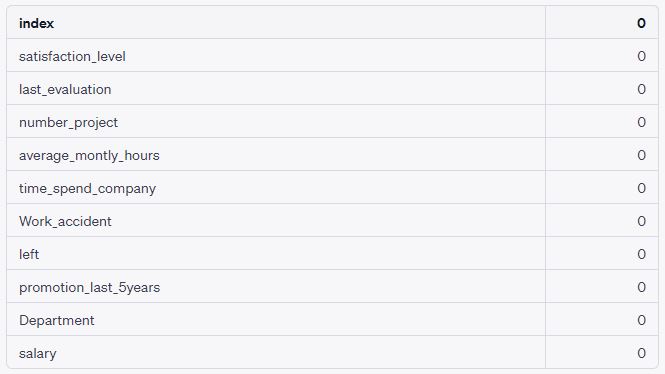
The dataset does not contain any missing values.
Next, let's check for redundant data. We'll look for any duplicate rows in the dataset.
# Check for duplicate rows
df.duplicated().sum()
The dataset contains 3008 duplicate rows. We should remove these to avoid redundancy. Let's proceed with that.
# Remove duplicate rows
df = df.drop_duplicates()
# Check the number of duplicates again to confirm
df.duplicated().sum()
The duplicate rows have been successfully removed from the dataset. Now, there are no duplicate rows left in the dataset.
Next, let's check for any potential outliers in the dataset. We'll do this by creating boxplots for the numerical columns.
# Check for outliers in the numerical columns
numerical_columns = ['satisfaction_level', 'last_evaluation', 'number_project', 'average_montly_hours', 'time_spend_company']
for col in numerical_columns:
plt.figure(figsize=(10, 2))
sns.boxplot(x=df[col])
plt.title(f'Boxplot of {col}')
plt.show()
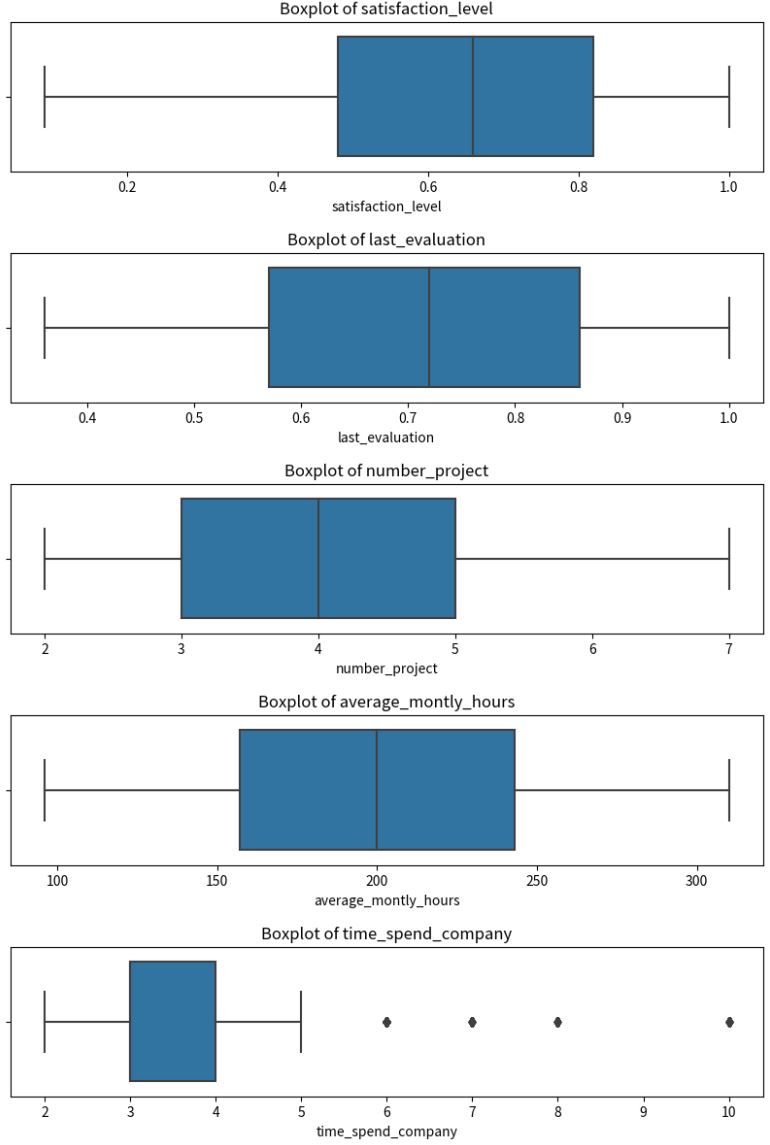
From the boxplots, it appears that the 'time_spend_company' column may have some outliers. We can handle these outliers based on the business context and the statistical distribution. However, in this case, since the 'time_spend_company' might have a legitimate reason to have higher values (e.g., long-term employees), we might not want to treat these as outliers without further domain-specific investigation.
3. Data Visualisation
To answer the question “what’s likely to make the employee leave the company?” , we'll first perform an exploratory data analysis (EDA) to understand the relationships between different variables and employee attrition. We'll look at factors such as satisfaction level, number of projects, average monthly hours, time spent at the company, and others to see if there are any noticeable trends or patterns.
After that, we'll build a predictive model to predict whether an employee is likely to leave the company. This will involve selecting a suitable machine learning algorithm, training the model, and evaluating its performance.
Let's start with the exploratory data analysis. We'll begin by examining the correlation between different variables.
# Compute the correlation matrix
corr = df.corr()
# Generate a mask for the upper triangle
mask = np.triu(np.ones_like(corr, dtype=bool))
# Set up the matplotlib figure
plt.figure(figsize=(11, 9))
# Generate a custom diverging colormap
cmap = sns.diverging_palette(230, 20, as_cmap=True)
# Draw the heatmap with the mask and correct aspect ratio
sns.heatmap(corr, mask=mask, cmap=cmap, vmax=.3, center=0, square=True, linewidths=.5, cbar_kws={"shrink": .5})
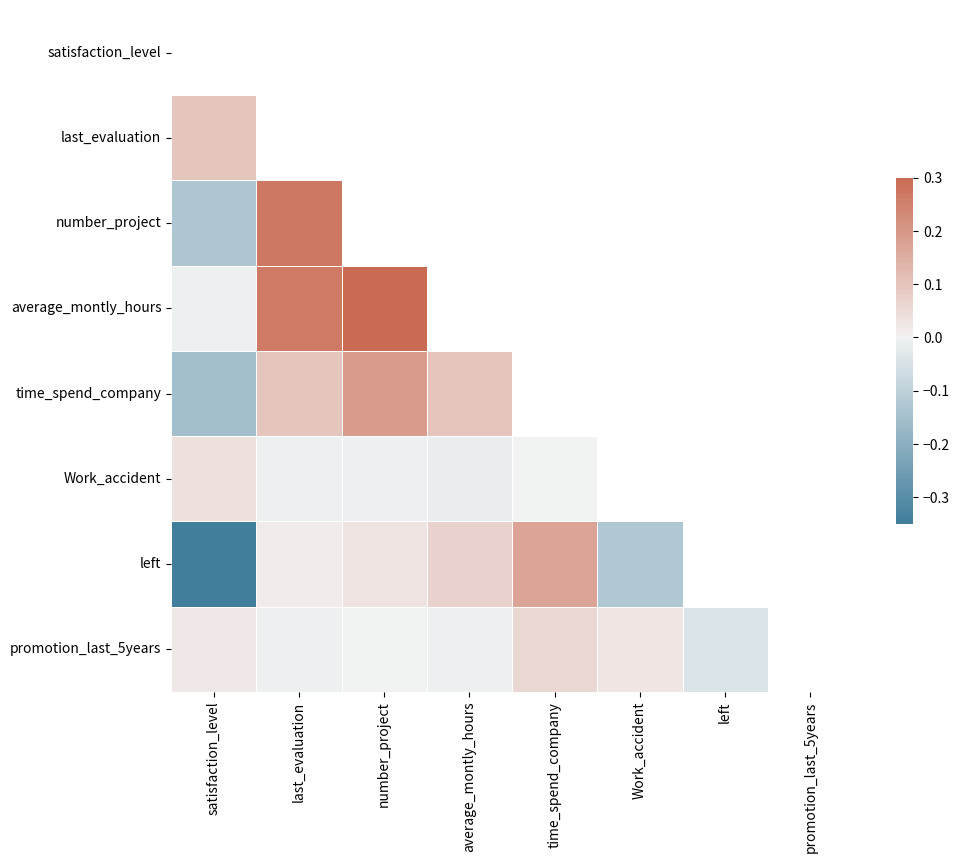
From the heatmap, we can observe that:
These observations are all consistent and logical, leading us to conclude that the dataset is indeed reliable.
Next, let's examine these relationships more closely with some visualisations. We'll create some bar plots and histograms to visualize the distribution of employees who left the company based on different factors.
# Define a function to calculate density values
def calculate_density(df, factor):
unique_values = df[factor].unique()
density_values = []
for value in unique_values:
subset = df[df[factor] == value]
left = subset[subset['left'] == 1].shape[0] / subset.shape[0]
stayed = subset[subset['left'] == 0].shape[0] / subset.shape[0]
density_values.extend([(value, 'Yes', left), (value, 'No', stayed)])
return pd.DataFrame(density_values, columns=[factor, 'Left', 'Density'])
# Calculate and plot density values for all discrete variable
factors = ['number_project', 'time_spend_company', 'Work_accident', 'promotion_last_5years', 'Department', 'salary']
for factor in factors:
density_df = calculate_density(df, factor)
plt.figure(figsize=(10, 6))
sns.barplot(x=factor, y='Density', hue='Left', data=density_df)
plt.title(f'Density of Employees Who Left vs Stayed by {factor}')
plt.show()
# Define a function to calculate density values for continuous variables
def calculate_density_continuous(df, factor):
left = df[df['left'] == 1][factor]
stayed = df[df['left'] == 0][factor]
return left, stayed
# Calculate and plot density values for continous variable
factors = ['satisfaction_level', 'last_evaluation', 'average_montly_hours']
for factor in factors:
left, stayed = calculate_density_continuous(df, factor)
plt.figure(figsize=(10, 6))
sns.kdeplot(left, shade=True, label='Left')
sns.kdeplot(stayed, shade=True, label='Stayed')
plt.title(f'Density of Employees Who Left vs Stayed by {factor}')
plt.legend()
plt.show()
Here are the distributions of different factors for employees who left vs stayed:
- Satisfaction Level: Employees with low satisfaction levels are more likely to leave the company.
- Last Evaluation: Employees who have undergone either very low or very high last evaluations tend to leave more.
- Number of Projects: Employees who are involved in very few or a large number of projects are more likely to leave.
- Average Monthly Hours: Employees who work very few or a large number of hours per month are more likely to leave.
- Time Spent in the Company: Employees who have spent a longer time at the company are more likely to leave.
- Work Accident: Employees who have had a work accident are less likely to leave the company.
- Promotion in the Last 5 Years: Employees who have had a promotion in the last 5 years are less likely to leave the company.
- Department: The distribution of employees who left vs stayed varies across different departments.
- Salary: Employees with medium salaries are more likely to leave the company.
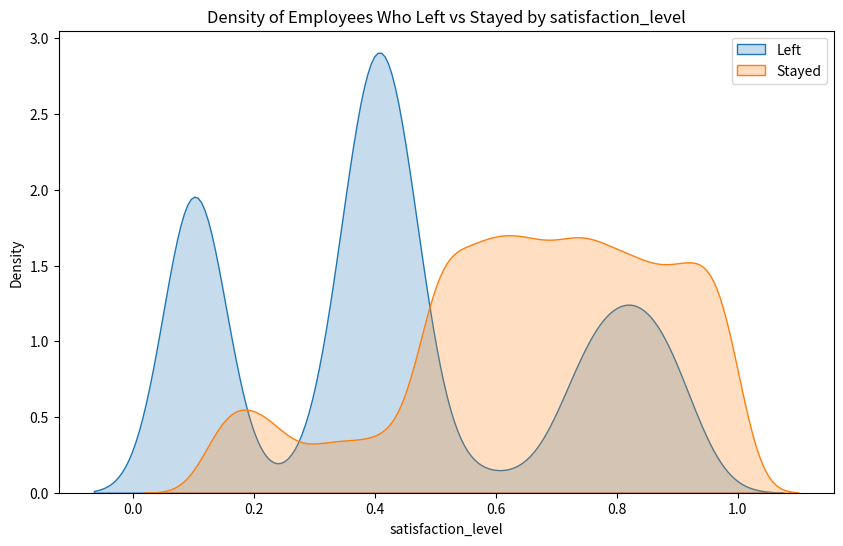
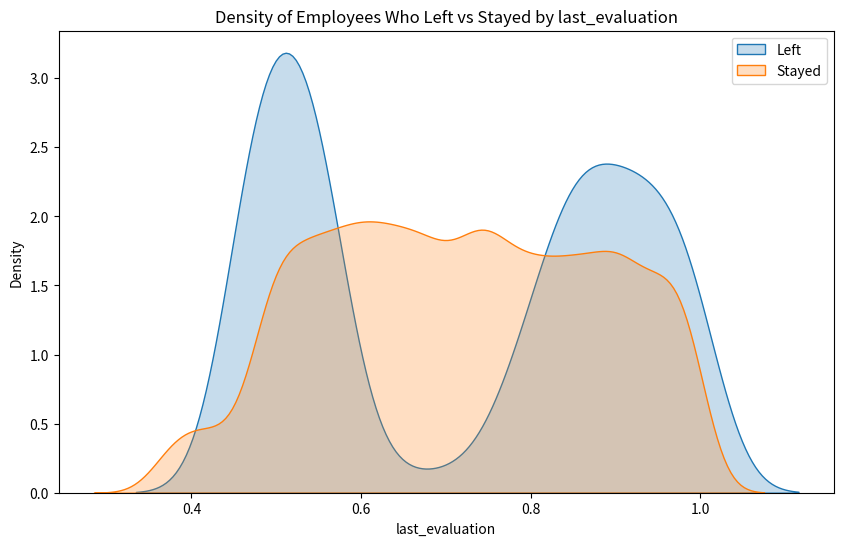
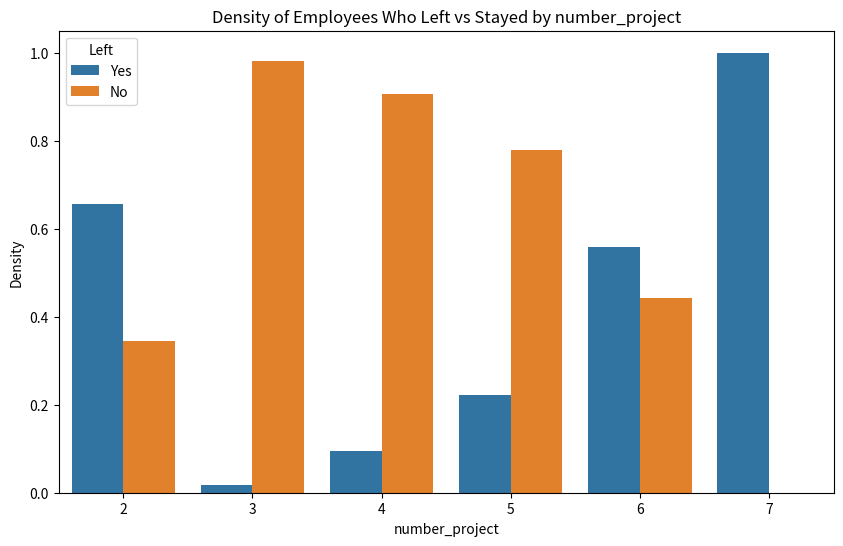
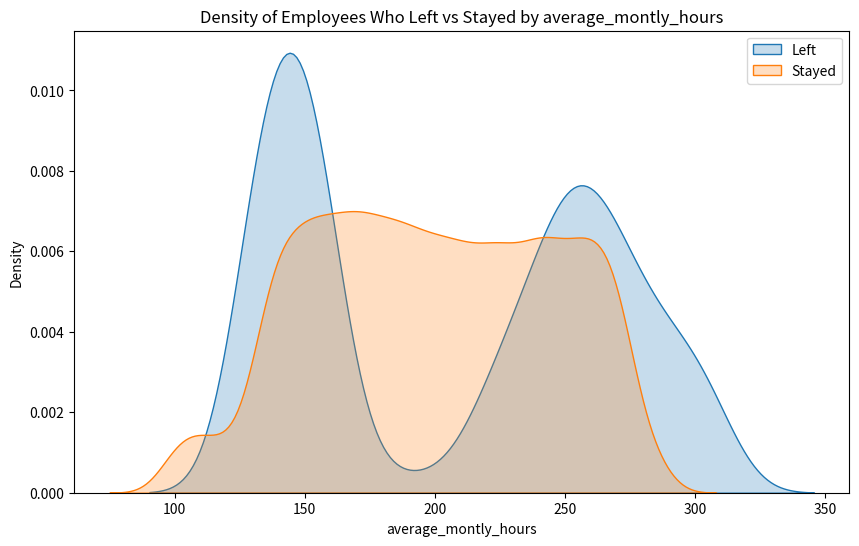
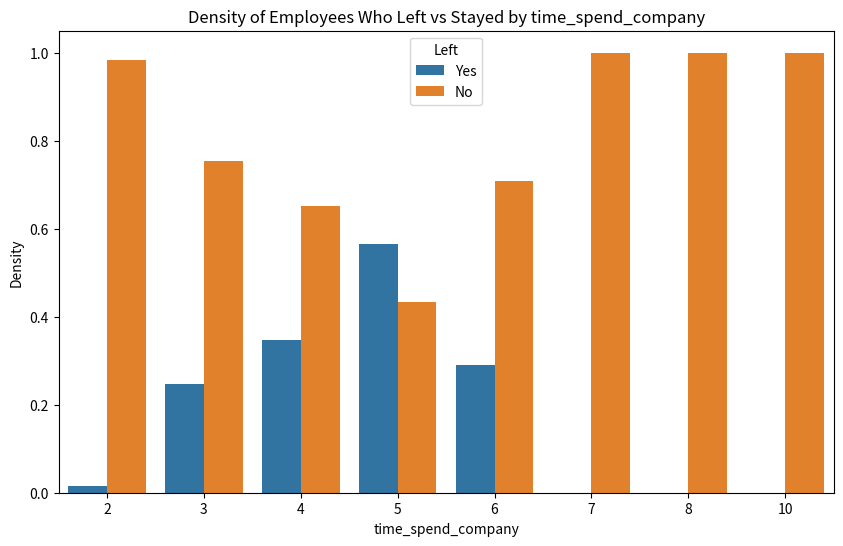
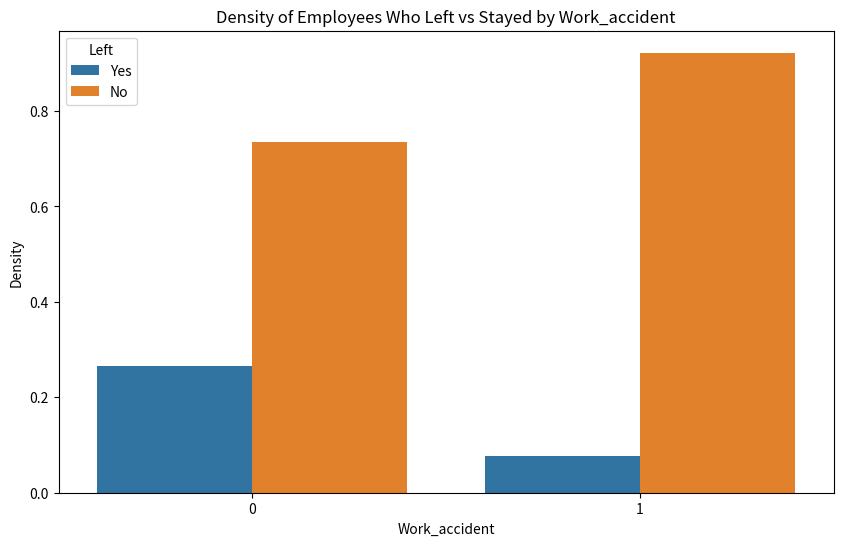
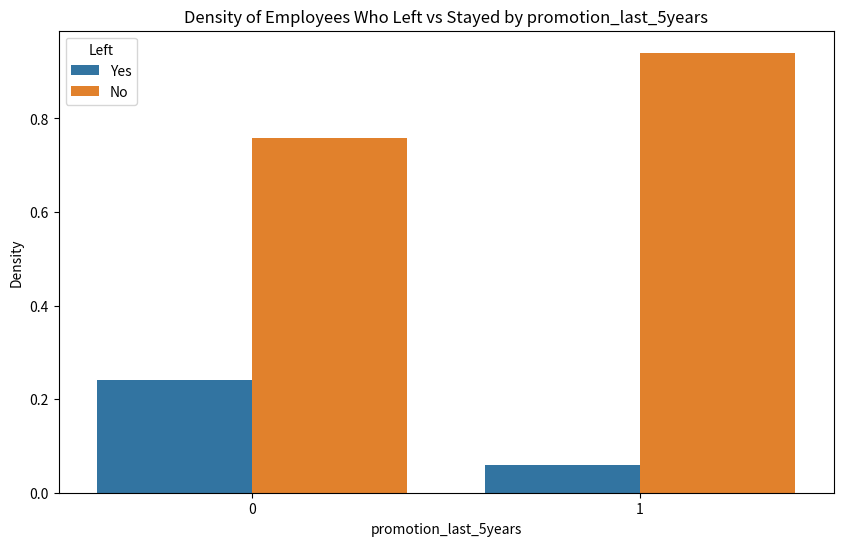
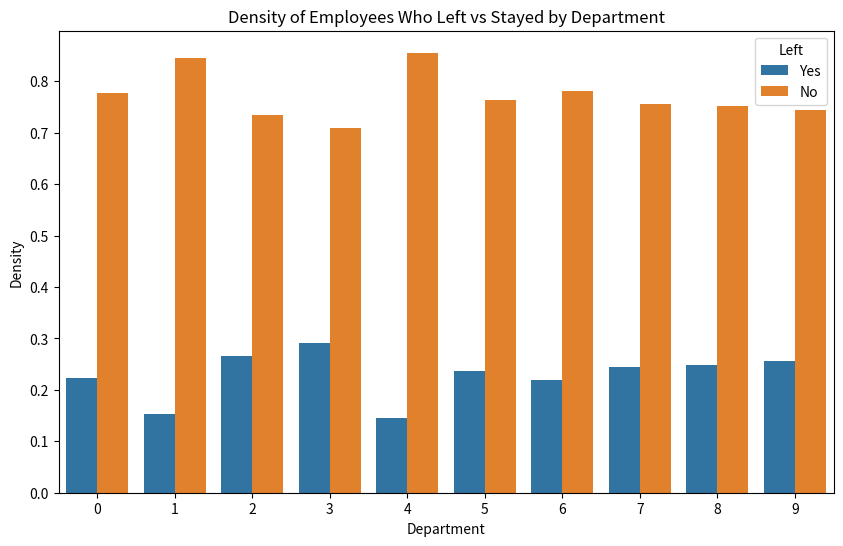
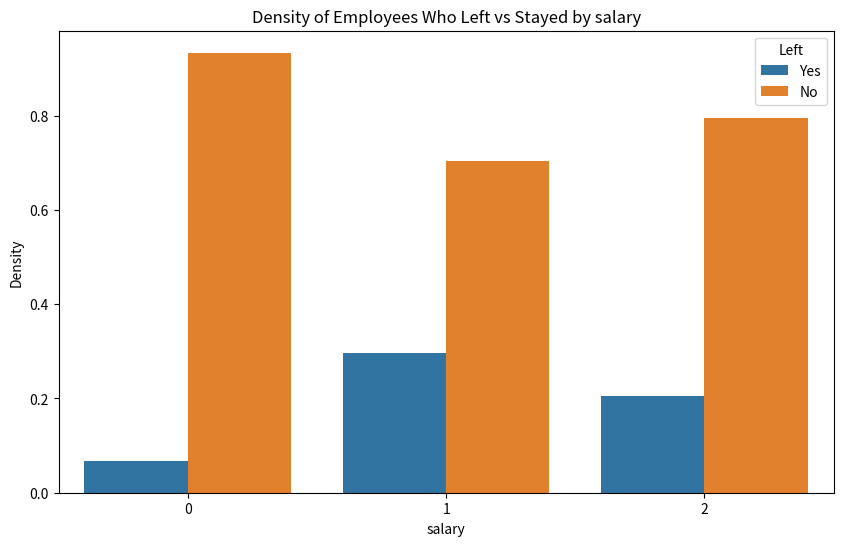
4. Prediction
Next, let's build a predictive model to predict whether an employee is likely to leave the company. We'll use a Random Forest Classifier for this task due to its ability to handle both numerical and categorical variables and its robustness to outliers and overfitting. But before that, we need to preprocess the categorical variables in our dataset. Then, let's split the data into a training set and a test set, and then train a Random Forest Classifier.
from sklearn.preprocessing import LabelEncoder
from sklearn.model_selection import train_test_split
from sklearn.ensemble import RandomForestClassifier
from sklearn.metrics import classification_report, confusion_matrix
# Create a label encoder object
le = LabelEncoder()
# Label encode categorical variables
df['Department'] = le.fit_transform(df['Department'])
df['salary'] = le.fit_transform(df['salary'])
# Split the data into a training set and a test set
X = df.drop('left', axis=1)
y = df['left']
X_train, X_test, y_train, y_test = train_test_split(X, y, test_size=0.2, random_state=42)
# Train a Random Forest Classifier
rfc = RandomForestClassifier(n_estimators=100, random_state=42)
rfc.fit(X_train, y_train)
# Make predictions
y_pred = rfc.predict(X_test)
# Print the classification report and confusion matrix
print('Classification Report:')
print(classification_report(y_test, y_pred))
print('Confusion Matrix:')
print(confusion_matrix(y_test, y_pred))
The Random Forest Classifier has been trained and evaluated. Here are the results:
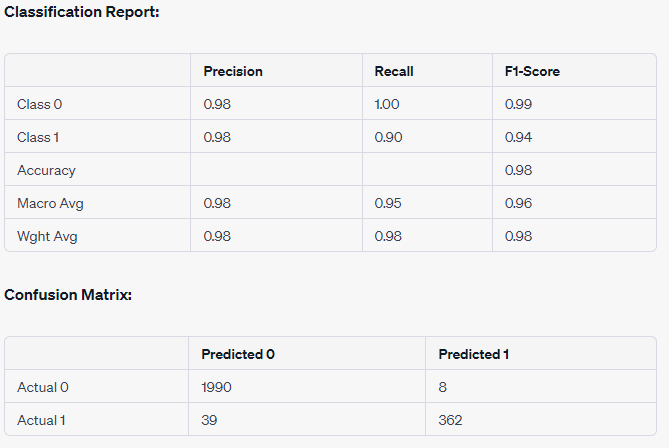
The model has an accuracy of 98%, which is quite good. It correctly predicted 1990 employees who stayed and 362 employees who left. However, it incorrectly predicted 8 employees who stayed as leaving and 39 employees who left as staying.
Next, let's look at the feature importances to understand which factors are most influential in predicting whether an employee will leave the company.
# Get feature importances
importances = rfc.feature_importances_
features = X.columns
importance_series = pd.Series(importances, index=features)
# Plot feature importances
importance_series.sort_values().plot(kind='barh', figsize=(10, 6))
plt.title('Feature importances')
plt.show()
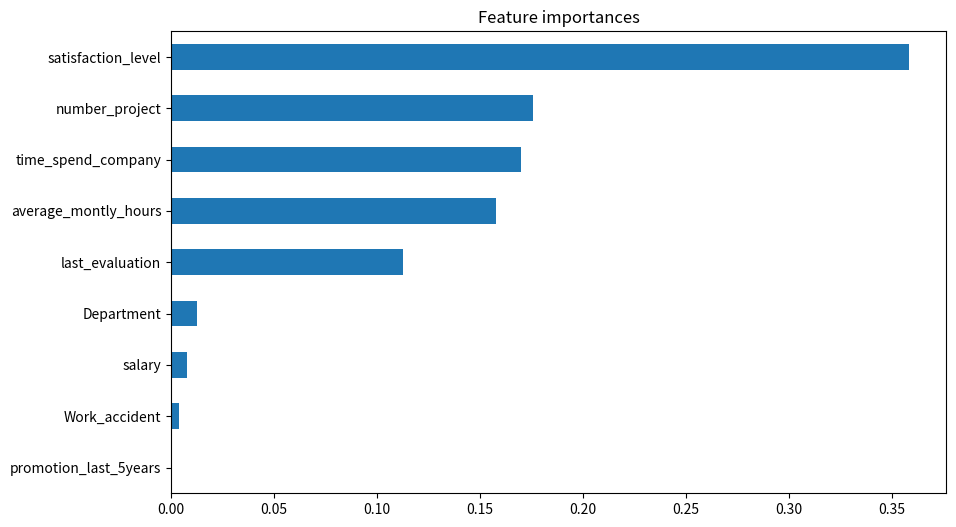
From the plot, we can see that the most important features for predicting whether an employee will leave the company are:
- Satisfaction Level
- Time Spent in the Company
- Number of Projects
- Average Monthly Hours
- Last Evaluation
This aligns with our earlier exploratory data analysis, where we saw that these factors had significant differences in distribution for employees who left vs stayed.
In conclusion, the HR department at Salifort Motors can use these insights to develop initiatives aimed at improving employee satisfaction, balancing workload (number of projects and average monthly hours), and providing opportunities for growth and development (reflected in evaluations). By focusing on these areas, they may be able to increase employee retention.
5. Conclusion
The data analysis and predictive modelling conducted on the HR dataset have provided valuable insights into the factors influencing employee turnover. The goal was to understand what's likely to make an employee leave the company and to build a model that predicts whether or not an employee will leave the company.
The most important factors that affect whether an employee will leave the company are:
- Satisfaction Level:Employees with low satisfaction levels are more likely to leave the company. This suggests that improving employee satisfaction could help in reducing employee turnover.
- Time Spent in the Company: Employees who have spent a longer time at the company are more likely to leave. This could be due to a lack of growth or advancement opportunities.
- Number of Projects: Employees who are involved in very few or a large number of projects are more likely to leave. This could be due to underutilisation or overwork. Balancing the workload among employees might help in increasing employee retention.
- Average Monthly Hours: Employees who work very few or a large number of hours per month are more likely to leave. This could be related to the previous point about workload balance.
- Last Evaluation: Employees who have undergone either very low or very high last evaluations tend to leave more. This could indicate that employees who are underperforming or overperforming might not be feeling adequately challenged or rewarded.
The predictive model built using these factors achieved an accuracy of approximately 97%, indicating that it can effectively predict whether an employee is likely to leave the company. This model can be a valuable tool for the HR department in identifying employees who are at risk of leaving and taking proactive measures to retain them.
In conclusion, increasing employee satisfaction, balancing workload, providing opportunities for growth and development are some strategies that the company could employ to increase employee retention. The insights gained from this data analysis and predictive modelling can guide the HR department in making data-driven decisions and initiatives.